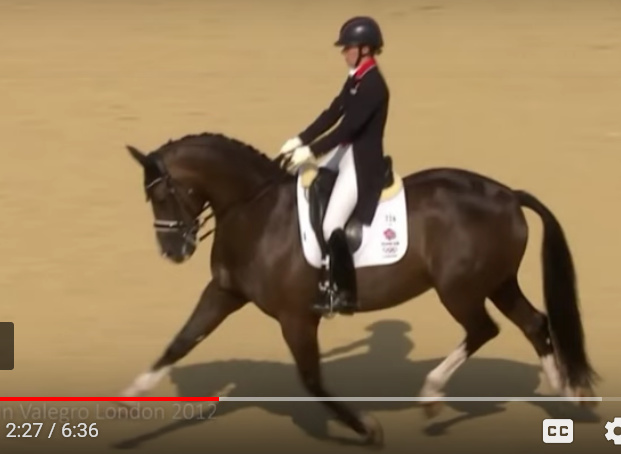Let’s have Julie reply to this: “Contrary to popular opinion, Diagonal Advanced Placement was not discovered by scientists in the 1990s due to the emergence of advanced video technology. If you know a well rounded horse person, ask them to check their book shelves for ‘Die Reitkunst im Bilde’ by Ludwig Koch, published in 1928.
The book describes a fault known as the ”rushed hind leg” whereby ”the hind legs contact the ground unbent and in a dragging fashion and the hind leg is put down before the diagonal foreleg.”
Sound familiar? The description continues: ”This type is often seen in carriage horses who have been fixed too high in front in order to create the high and dazzling front leg action which impresses lay people.”
Waldemar Seunig had this to say about DAP: ”This gait is induced through false tension. Stabbing, hovering steps, braced back and a restricted neck, which ought to be stretched better forward. Due to the false posture and the forced trot, the latter becomes impure (the left hind leg pushes off before the diagonal right foreleg) which means an impure rhythm behind. The braced, non-yielding back does not swing. The collaboration of the forehand and the hind end has been disrupted. Schenkelgänger!"
So now we know that a long time ago, horsemen knew of DAP and saw it as a symptom of tension due to a forced, unnatural head carriage. And that back then, it was associated with a type of flashy front leg movements which impressed people who didn’t know what they were looking at. Was that a different type of DAP to the type the Olympic horses were showing in the 1990s? If so, isn’t it a fabulous coincidence that a footfall sequence which used to denote tension due to forced riding and false collection should turn out to be the exact same footfall sequence which correlated with what rightly passed for ”good balance” and ”uphill movement” in the 1990s? The 1990s, when forced, short necks and flashy front legs were increasingly rewarded with high scores in the dressage ring. The 1990s, when it became accepted, not only to hyperflex your horse in the warm up, but also to ride behind the vertical during the actual test. That really would be some coincidence.
A hind leg which lands early and further back ends up standing further back - behind the front leg in a timing sense - during the maximal loading phase. Everything about the hind leg movement is moved back, relative to the horse. So that lovely ”uphill movement” seen during the suspension phase transforms into rather a downward one as the horse begins to load the limbs. By the time the front leg is maximally loaded, the hind leg is often camped out too far to properly assist it. Even if the hind leg is still in front of the hip joint, tension prevents the horse from sinking into that hind leg, leaving him croup high and on the forehand. Perhaps that is why this type of movement was frowned upon at a time when horses were less disposable than they are today.” —Julie Taylor




